

Table of contents
- Sowing behind glass
- Location
- soil quality
- plants in the bed
- Support rod protects against windthrow
- Pour
- Fertilize
- Cut
- hibernate
- Hardy varieties
Lend your summer garden an atmospheric color with mallows. The picturesque perennials are easy to sow, plant and care for. This green guide has set itself the task of explaining the expert cultivation in all practical steps to you. If you are looking for the most beautiful hardy varieties, you will find them here.
Sowing behind glass
The best time to sow mallow seeds is in March and April. Germination and fungal resistance of the seed is strengthened by soaking the seeds in lukewarm water or camomile tea for 24 hours beforehand. While the seeds take their bath, the growing medium is disinfected. Fill the seed soil into a fireproof bowl, spray the substrate with water and put the lid on loosely. At 150 degrees top and bottom heat, all pathogens are destroyed within 30 minutes. Follow these steps:
- Fill small pots with the cooled seed soil with a 1 cm pouring rim
- Put 1 to 2 seeds per pot 0.5 to 1 centimeter deep into the substrate and press down lightly
- Moisten the potting soil with soft water
- Place in a partially shaded, warm window seat
- Germination time at 15 to 20 degrees Celsius is 2 to 3 weeks
Keep the substrate constantly slightly moist. The seedlings are not yet given fertilizer at this point. After germination, growth proceeds rapidly. Above the two cotyledons, the first true, sparsely hairy mallow leaves thrive on the stiffly erect stalk. Until the beginning of the planting season, your pupils take a place at the sunny south-facing window.
Tip:
Is there a tight squeeze on the window sill? Sow mallow seeds in early to mid-May in sunny beds. A sowing depth of 1 to 1.5 centimeters and a distance of 25 to 35 centimeters is ideal. In regions with harsh winters, wait until after the ice saints there are no more frosty nights to fear. Protect the seedbed from pecking birds and greedy rabbits with a close-meshed net.
Location

Mallows want a location with plenty of sun. The flower beauties graciously accept short-term penumbra. Under the influence of a permanent lack of light, the abundance of flowers falls far short of expectations. The following overview summarizes the perfect conditions for mallows in the garden:
- Full sun to shade, warm position
- Brief penumbra is tolerated
- Ideally protected from wind and rain
With these wishes for the location, mallows are predestined for the Mediterranean garden design. A square in front of the sun-warmed south wall of the house elicits a summer blossom festival from the perennials. In the romantic-opulent cottage garden, the magnificent flowers have conquered a regular place in the planting plan to colorfully set the picket fence in the limelight. As fence viewers, the majestic flowers receive a helpful support without any further action by the gardener.
soil quality
A sunny location alone is not enough for mallows to show their most beautiful side. The combination with a nutrient-rich, freshly moist to moderately dry and well-drained soil rounds off the perfect site conditions. The pivotal point for optimal soil quality is protection against waterlogging. A mallow with wet feet is doomed. Do you have doubts as to whether the prerequisite is met at the selected location? Enrich the soil to a third with sand or fine grit to optimize permeability.
plants in the bed
If the meteorologists are no longer forecasting ground frosts in May, plant your early or ready-bought mallows in the garden. Before that, the young plants go through a phase of hardening. For this purpose, they remain for a week in the partially shaded, wind and rain-protected location on the balcony or in the garden. For the cool nights, the plants move indoors. After acclimatization, planting proceeds in the following steps:
- Soak potted root balls in water until no more air bubbles rise
- Loosen up the soil well, rake and weed
- Dig small planting pits 25 to 30 centimeters apart
- Enrich the excavation to a third with compost and horn shavings
- Repot and plant mallows while maintaining the previous planting depth in the seed pot
Press the soil firmly with both hands for a good ground contact with the root ball. Then water the mallows thoroughly without waterlogging. A mulch layer of leaves or coarse compost is beneficial to keep the soil warm and moist.
Tip:
Balcony gardeners do not have to do without the furious mallow blossoms. Magnificent varieties, such as the popular hollyhocks (Abutilon), thrive in tubs. Good potting soil is suitable as a substrate, enriched with expanded clay or lava granules for good permeability. A drainage made of potsherds effectively prevents waterlogging.
Support rod protects against windthrow
Most mallows thrive as perennial, herbaceous plants and stretch up to 100 centimeters towards the sky. This carries the risk of windthrow. In most cases, the main stem breaks, from which the flowers do not recover. With a support stick you can effectively prevent the floral disaster. As part of the planting, put a stick into the ground, the length of which corresponds to the expected growth height. Parallel to the growth, successively fix the stalk to the support with soft hose clamps. Wire, rubber, or plastic plant ties may cut into the soft stem tissue.
Pour
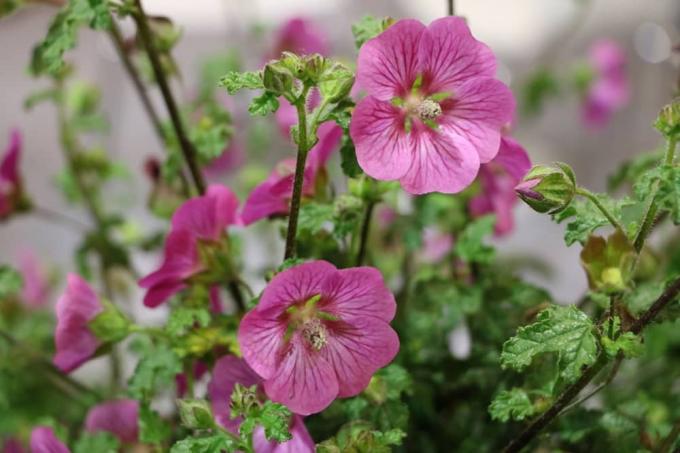
Regular watering plays a key role in the uncomplicated care program. Check the soil daily with your finger. If you don't feel any moisture in the top layer of soil, watering is required. Slowly let the water run onto the root disc. Please avoid sprinkling the flowers and leaves with the water hose. Damp leaves provide an ideal target for fungal pathogens and numerous types of pests.
Fertilize
By enriching the soil with compost and horn shavings in connection with the planting, the nutrient requirement is covered for the first 4 to 6 weeks. You can either administer a liquid flower fertilizer in the period that follows or work more mature compost and horn shavings into the surface of the soil. In principle, fertilize your mallows sparingly. Excess nitrogen increases leaf mass at the expense of bud abundance.
Cut
At the end of the flowering period, perennial mallow species are cut back to the ground. The timing depends on whether self-seeding is desired or not. Wait until the flowers have turned into capsules before pruning. Ripe pods pop open and spread the seeds around the garden for self-propagation. To prevent self-seeding, cut off wilted flowers promptly. This has the advantage that the plant produces more flowers and the flowering period is significantly longer.
hibernate
Frosty temperatures are no problem for overwintering perennial mallows. If the plants do not sprout after the winter, the most common causes are frosts or permanent winter wetness. With a simple winter protection you prevent the damage. After the autumn pruning, cover the root disc with leaves and needle brushwood.
Hardy varieties
For some species of mallow, cultivation in the garden is a home game, such as the wild mallow (Malva sylvestris). Various conspecifics are at home in regions with winter conditions comparable to those prevailing in Central Europe. Recommended, hardy varieties from home and abroad are presented below with flowering time and growth height:
- Musk Mallow(Malva moschata) from June to September, good bee pasture, 50 to 60 cm high
- rose poplar(Malva alcea) from June to September, popular cottage garden flower, 80 to 100 cm high
- prairie mallow(Sidalcea malviflora) from June to August, ideal for open spaces, 80 to 100 cm high
- Thuringian shrub poplar(Lavatera thuringiaca) July to September, particularly hardy, 100 to 150 cm high
- wild mallow(Malva sylvestris) from May to August, biennial or perennial, 120 to 150 cm high
- bush mallow(Lavatera olbia) from July to September, shrub-like, woody, 130 cm to 150 cm tall
- Fig-leaved hollyhock(Alcea ficifolia) from June to September, huge cup-shaped flowers, 150 to 200 cm high
- hollyhock(Alcea rosea) from June to September, ideal for farm and cottage gardens, 200 to 250 cm high
A large number of magnificent varieties have emerged from the mallow species mentioned with simple, semi-double and lavishly double flowers. With regard to winter hardiness, the experienced gardener acts according to the rule of thumb: the more opulent the flowers, the more limited the frost hardiness. For gardening practice, this means that the native rose poplar 'Fastigiata' with simple cup-shaped flowers in locations with mild winters survives the cold season without protective measures, whereas the double hollyhock 'Pleniflora' relies on a thick layer of foliage is.
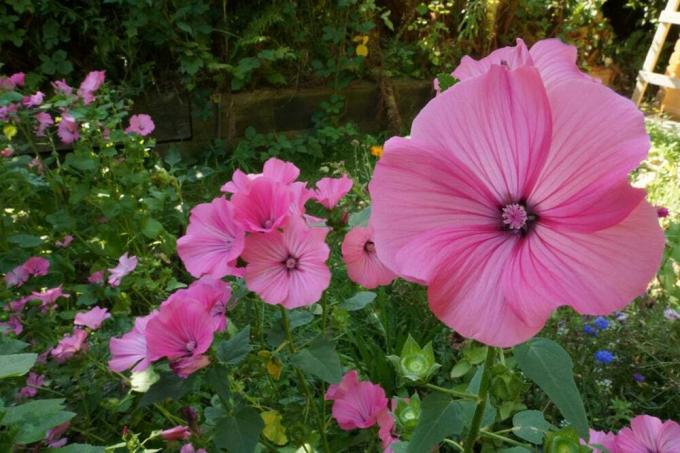
Don't let the different botanical names confuse you. Minimal differences at the molecular genetic level have prompted botanists to subdivide the mallow tribe (Malvaceae) into numerous genera, such as Malva, Lavatera and Alcea. The final division of the complex is still the subject of controversy among experts. The genera and associated species look confusingly similar and differ only in terms of the degree of winter hardiness. When it comes to sowing, planting and care, all mallows pull together.
 garden editorial
garden editorial I write about everything that interests me in my garden.
Learn more about summer flowers
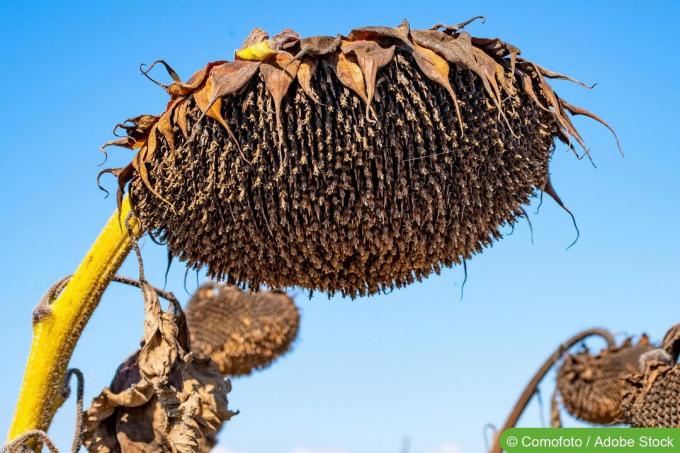
Should you cut off faded sunflowers?
Sunflowers bloom for a long time, but unfortunately not forever. Is it better to cut off the faded flowers or let nature take its course? Both are possible! It depends on the sunflower species and what you want to do with the ripening seeds. Read here whether you should cut off faded sunflowers.
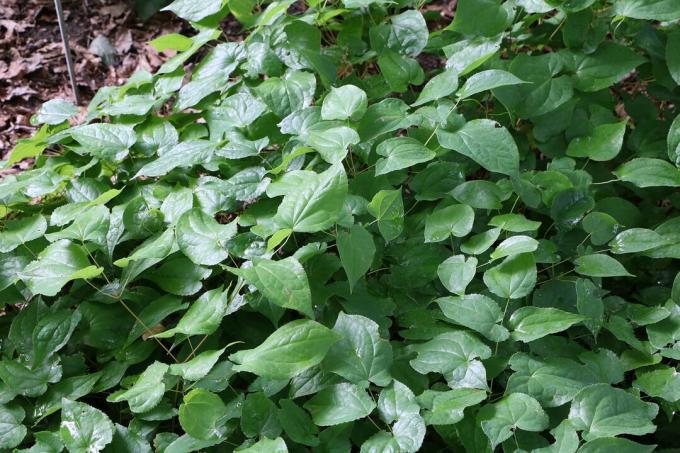
Elf Flower, Epimedium: 12 Tips for Grooming & Pruning
The elf flower transforms shady locations into a sea of flowers. Delicate flowers appear in white, yellow, pink, red or violet. The ground cover with the heart-shaped leaves is also decorative when not in bloom. We have put together the most important care tips for you.

Liver Balm, Ageratum: 10 tips for care
The leather balm is a daisy family that comes from Central and South America. In our latitudes, liver balm has been very popular for a long time, because here the plant does the trick not only a great figure as a gap filler between different perennials, but also in the form of one carpet of flowers.
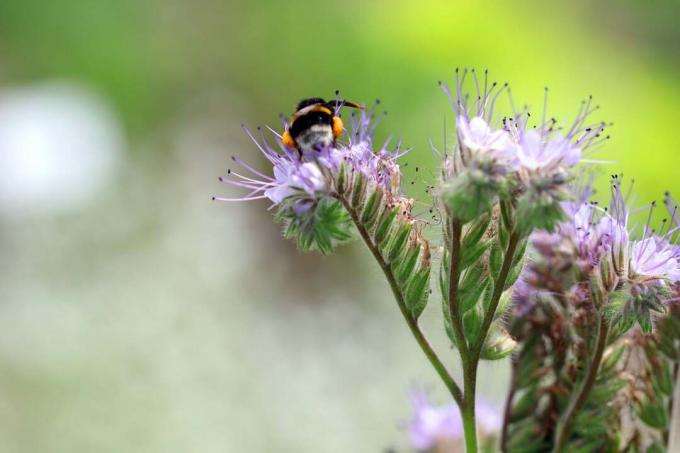
Bee friend, Phacelia: 8 tips for care
The cultivation of the tufted flower is not particularly difficult, because the plant turns out to be undemanding and easy to care for. If you take into account the basic requirements of this flowering perennial, you will benefit from its positive effects on biodiversity and soil conditions.
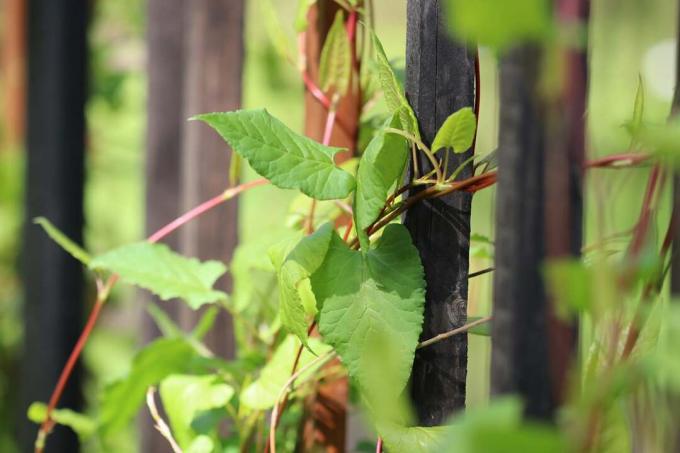
Climbing knotweed, Fallopia baldschuanica: Care from A – Z
A popular bee pasture but also a fast-climbing plant in the garden is the climbing knotweed. The plant should therefore be cultivated in the garden with some caution and appropriate care. Fallopia aubertii fits perfectly in a cottage or natural garden.
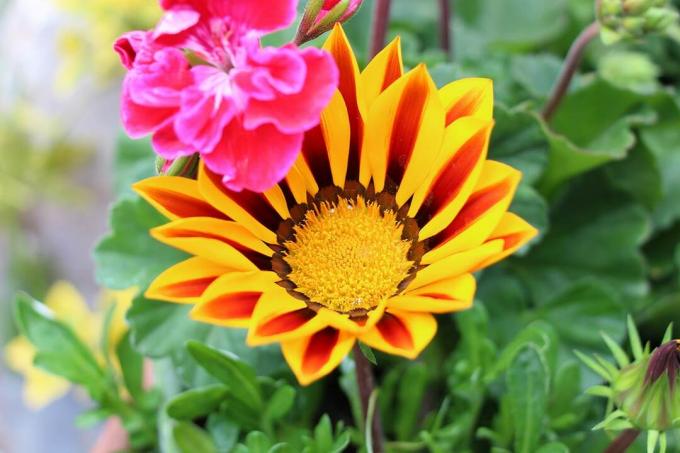
Is Gazania hardy? 6 tips for the winter
Gazania are commercially offered as annuals and not hardy. Hibernation works under ideal conditions, which require increased effort. Some varieties are considered hardy. The propagation of cuttings over the winter is an alternative to cultivating the plant perennial.
